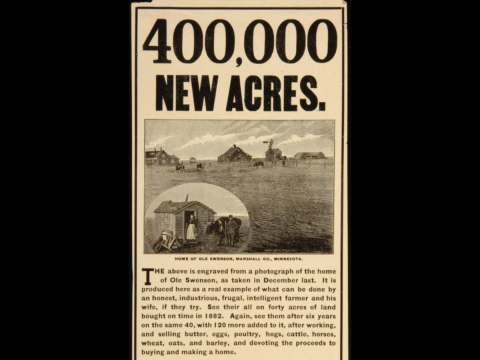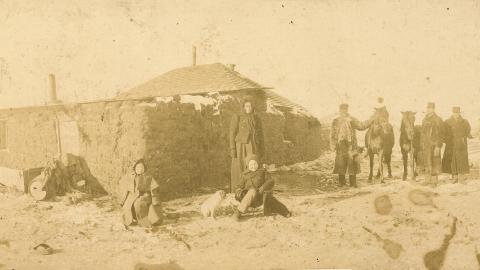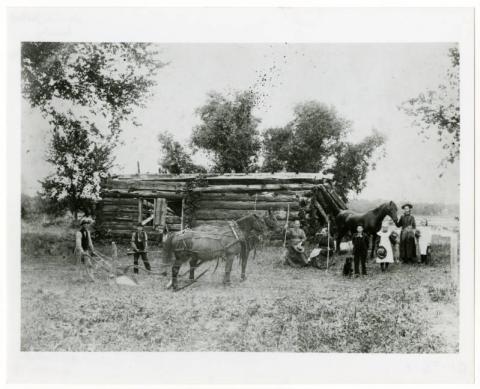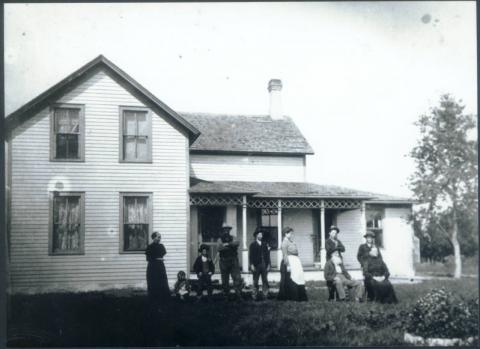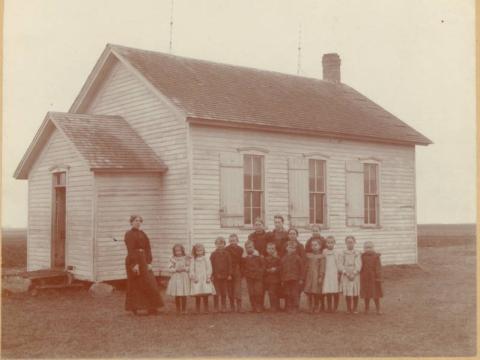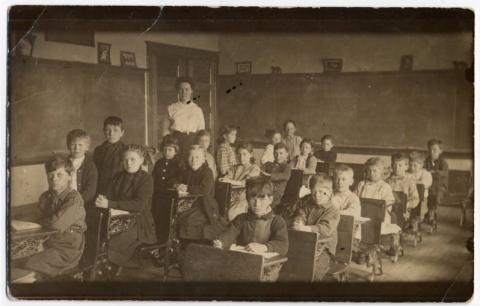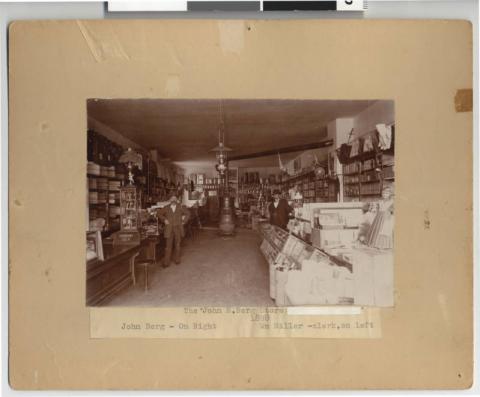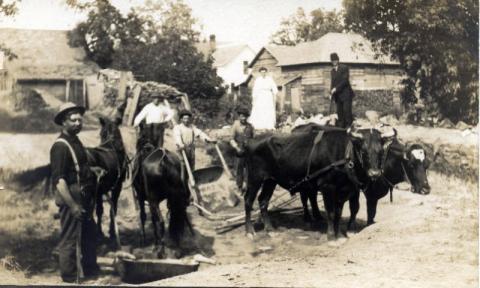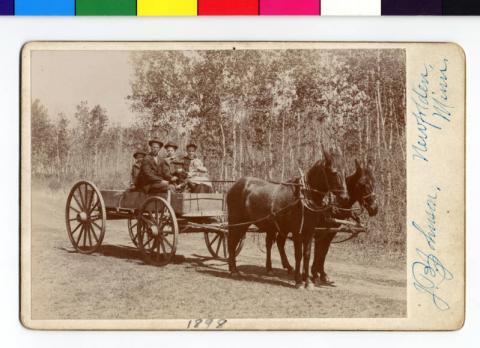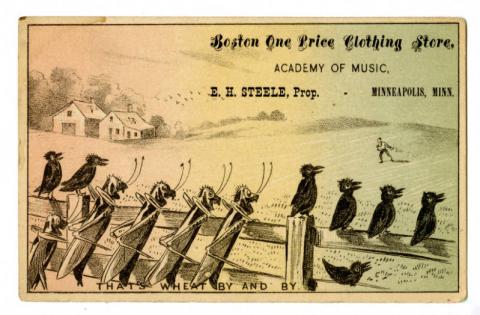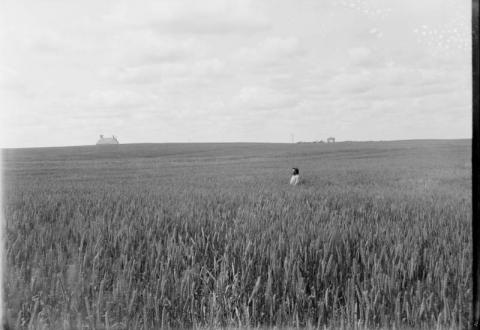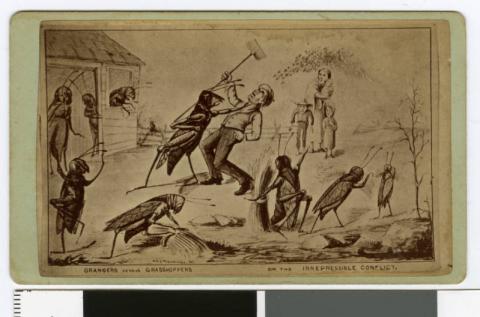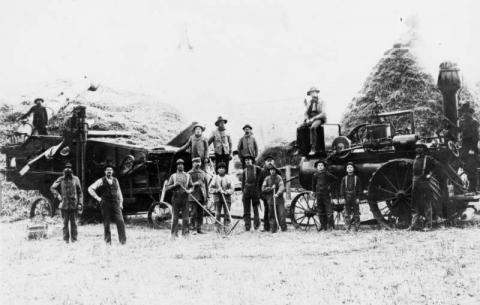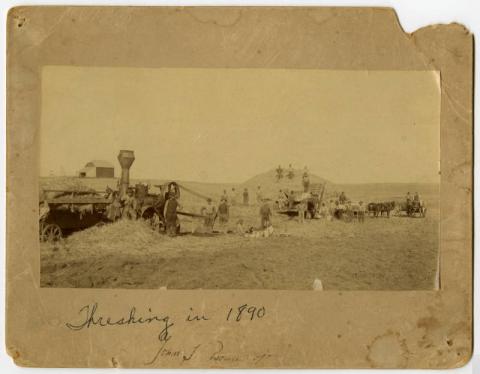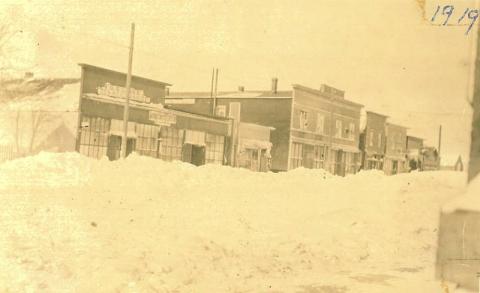Primary Source Set
by Greta Bahnemann, Metadata Librarian, Minnesota Digital Library, Minitex
Arts and Literature People of Minnesota
“On the Banks of Plum Creek” is an autobiographical novel written by Laura Ingalls Wilder. The book was first published in 1937 and is the fourth in Wilder’s nine book series for children. The events of “On the Banks of Plum Creek” begin in 1874, and pick up where “Little House on the Prairie” leaves off. The fourth novel recounts their attempts to make a new life in Minnesota after vacating a homestead in Kansas that was not legally open to settlement.
The novel repeatedly explores the themes of family life, the pioneer spirit, man vs. nature, and individual sacrifice. Wilder relates the difficulty her family faced as new settlers including the challenges of living in a sod dugout house as well as their ongoing problems with harsh weather conditions such as drought, prairie fires, blizzards, and the repeated grasshopper infestations which destroyed all of the family’s crops.
The book also explores the highly divided work roles of men and women at the time. Ma and Pa each have separate roles and different work to complete. Ma works in the house completing all food preparation. She also sees to the arrangement of the home’s furnishings. Ma is also in charge of the family’s sewing and instructs Mary and Laura in the construction of quilt blocks. Pa works on the farm caring for the animals as well as planting, tending, and harvesting the crops. Today “On the Banks of Plum Creek” and its companion volumes continue to both inspire and challenge readers and their understanding of the American frontier and pioneer life.
Discussion Questions & Activities
1. Look at the 2 cartoon images that deal with the grasshopper infestation in Minnesota. One of the images references the "Irrepressible Conflict" that farmers faced and the second image shows crows and grasshoppers hungrily eyeing a field that is being sown with wheat seed. One of the grasshoppers remarks, "That's wheat by and by." In the face of such devastation brought by the grasshopper swarms, why would some people make light of it? Can using humor help people cope?
2. If you were a pioneer, what jobs and tasks would you want to complete on your homestead? Do they match how we traditionally divide work between men and women? Can girls work in the field and boys work in the house?
3. The Ingalls family travelled across the Midwest using a horse drawn covered wagon. These covered wagons were generally 4 feet wide and 12 feet long. Ask students to first make a list of everything they would like to take with them if their family was moving. Use masking tape to mark out the wagon's dimension on the floor. Then discuss how easy or difficult it would be to fit everything on the list into the wagon. What has to be included? What could students leave behind?
eLibrary Minnesota Resources (for Minnesota residents)
1. "Fiction of the 1930s: Modernism for the Masses." American Decades, edited by Judith S. Baughman, et al., vol. 4: 1930-1939, Gale, 2001. Student Resources in Context. Accessed 29 Sept. 2017.
2. "Laura Ingalls Wilder." Britannica School, Encyclopædia Britannica, 13 Aug. 2017. Accessed 29 Sep. 2017.
3. "Little House On The Prairie's' Wilder Women." Talk of the Nation, 18 Aug. 2009. Student Resources in Context. Accessed 29 Sept. 2017.
4. "Overview of Laura (Elizabeth) Ingalls Wilder." DISCovering Authors. Detroit: Gale, 2003. Research in Context. Web. 29 Sept. 2017.
5. "Pioneer life." Britannica School, Encyclopædia Britannica, 13 Jun. 2013. Accessed 29 Sep. 2017.
6. Wommack, Linda. "Little Houses' in the Heartland Showcase Laura Ingalls Wilder Artifacts and Heirlooms." Wild West, vol. 24, no. 5, Feb. 2012, pp. 66-67. EBSCOhost.
Additional Resources for Research
1. Atkins, Annette. Harvest of Grief: Grasshopper Plagues and Public Assistance in Minnesota, 1873–89. St. Paul: Minnesota Historical Society Press, 1984.
2. Cartwright, R. L.. "Grasshopper Plagues, 1873–1877." MNopedia, Minnesota Historical Society. http://www.mnopedia.org/event/grasshopper-plagues-1873-1877 (accessed November 21, 2017).
3. Fraser, Caroline. Prairie Fires: The American Dreams of Laura Ingalls Wilder. New York: Metropolitan Books, Henry Hold and Company, 2017.
4. Keeler, Christy G. "Little House Teacher's Guides."
Published onLast Updated on
